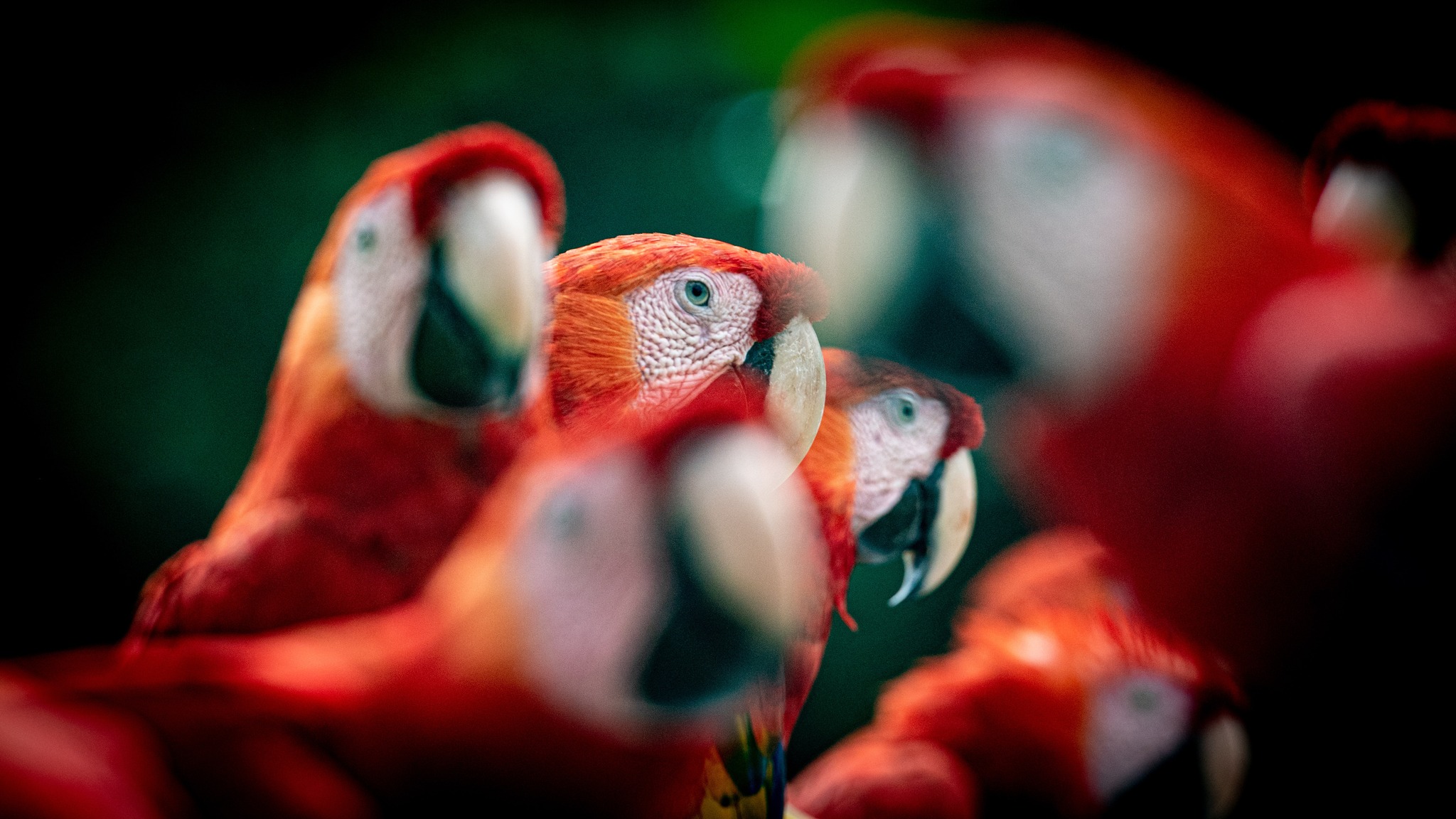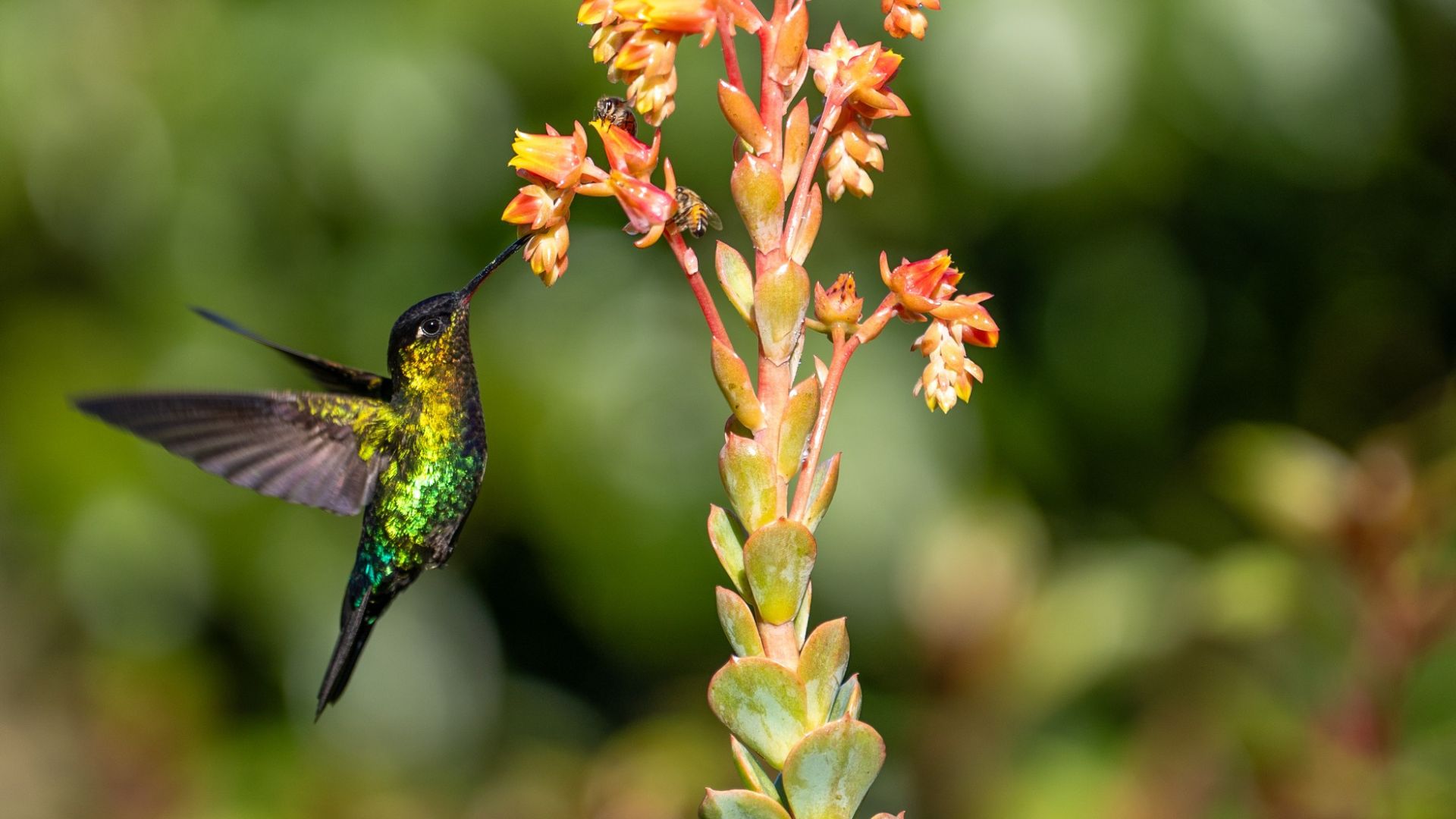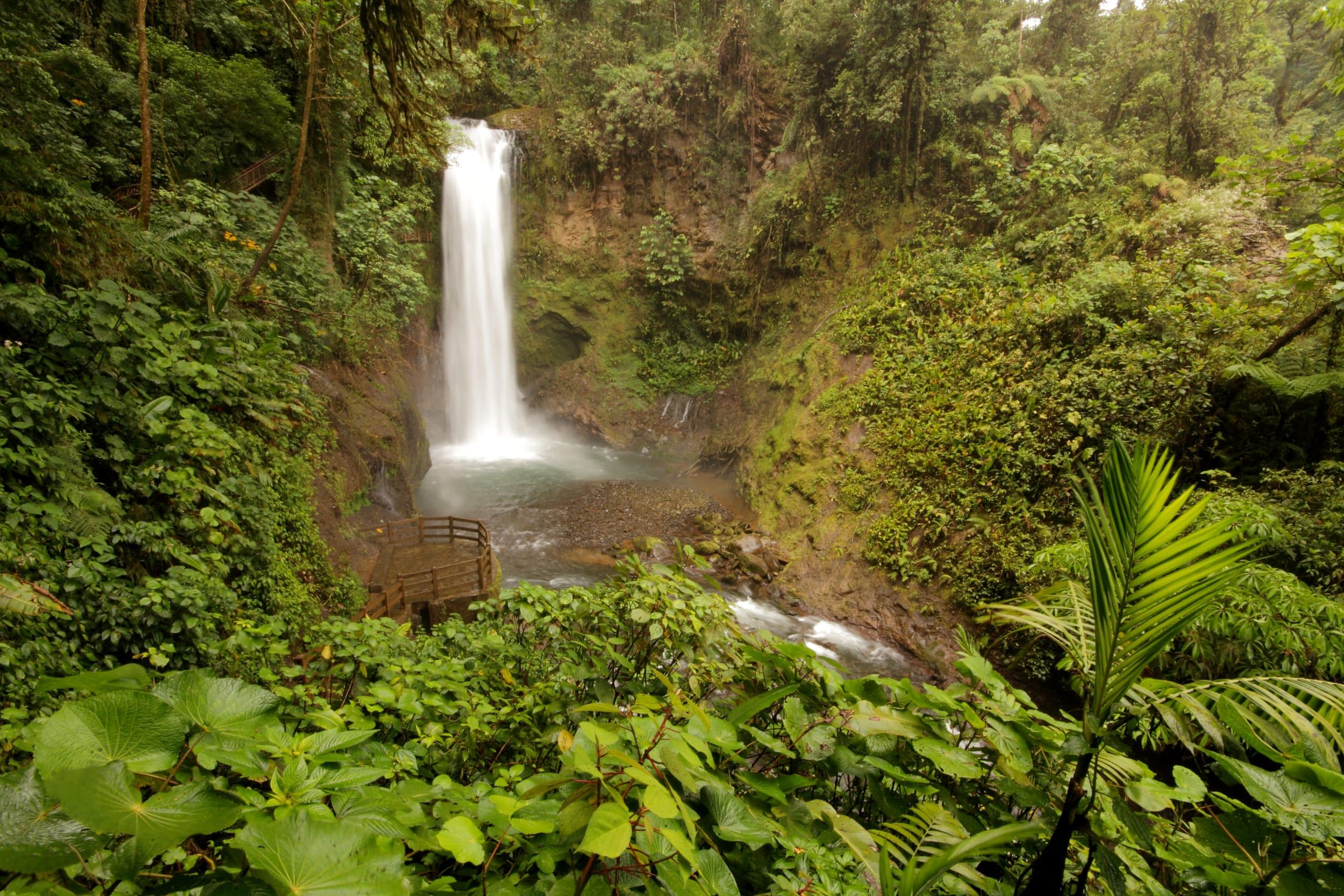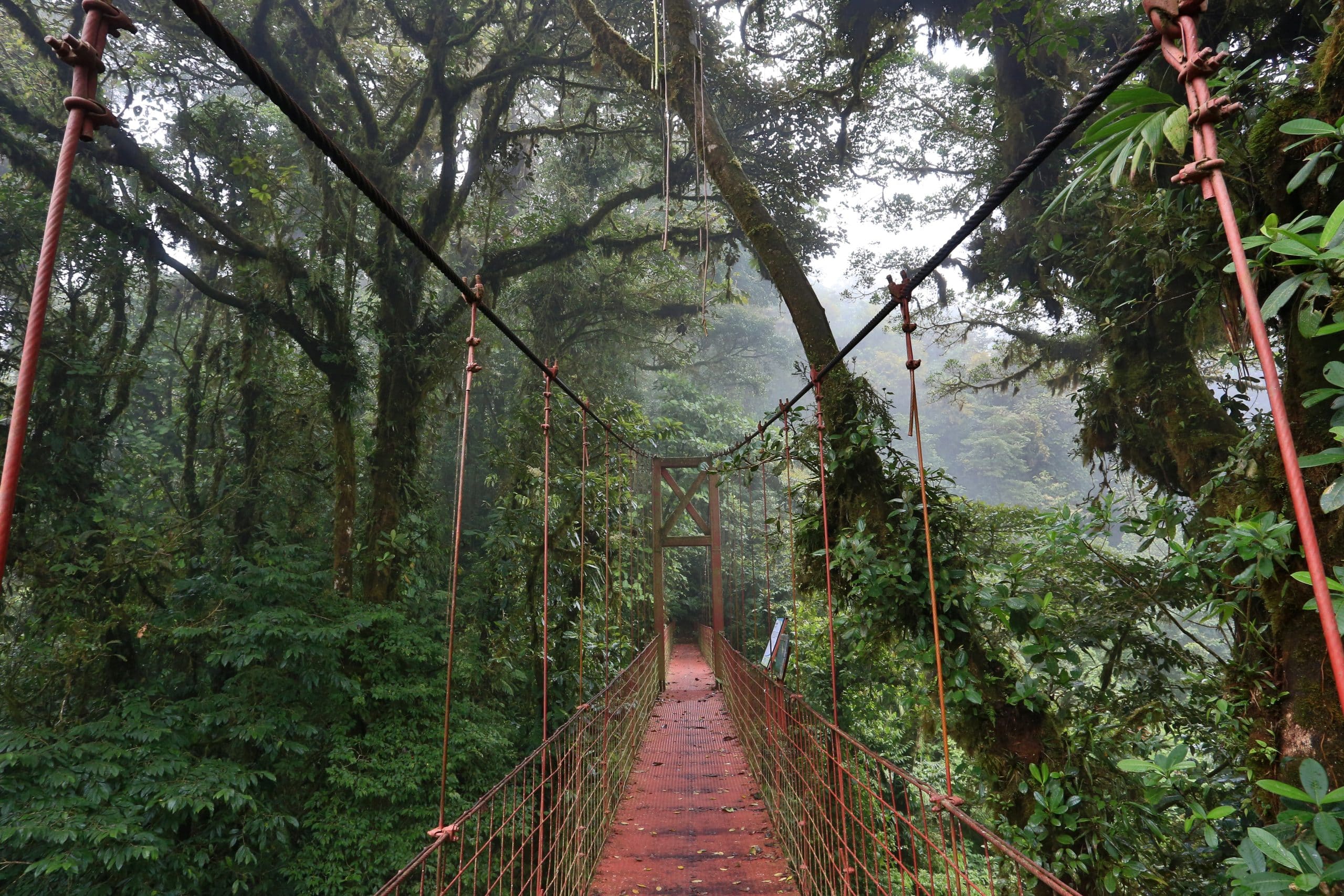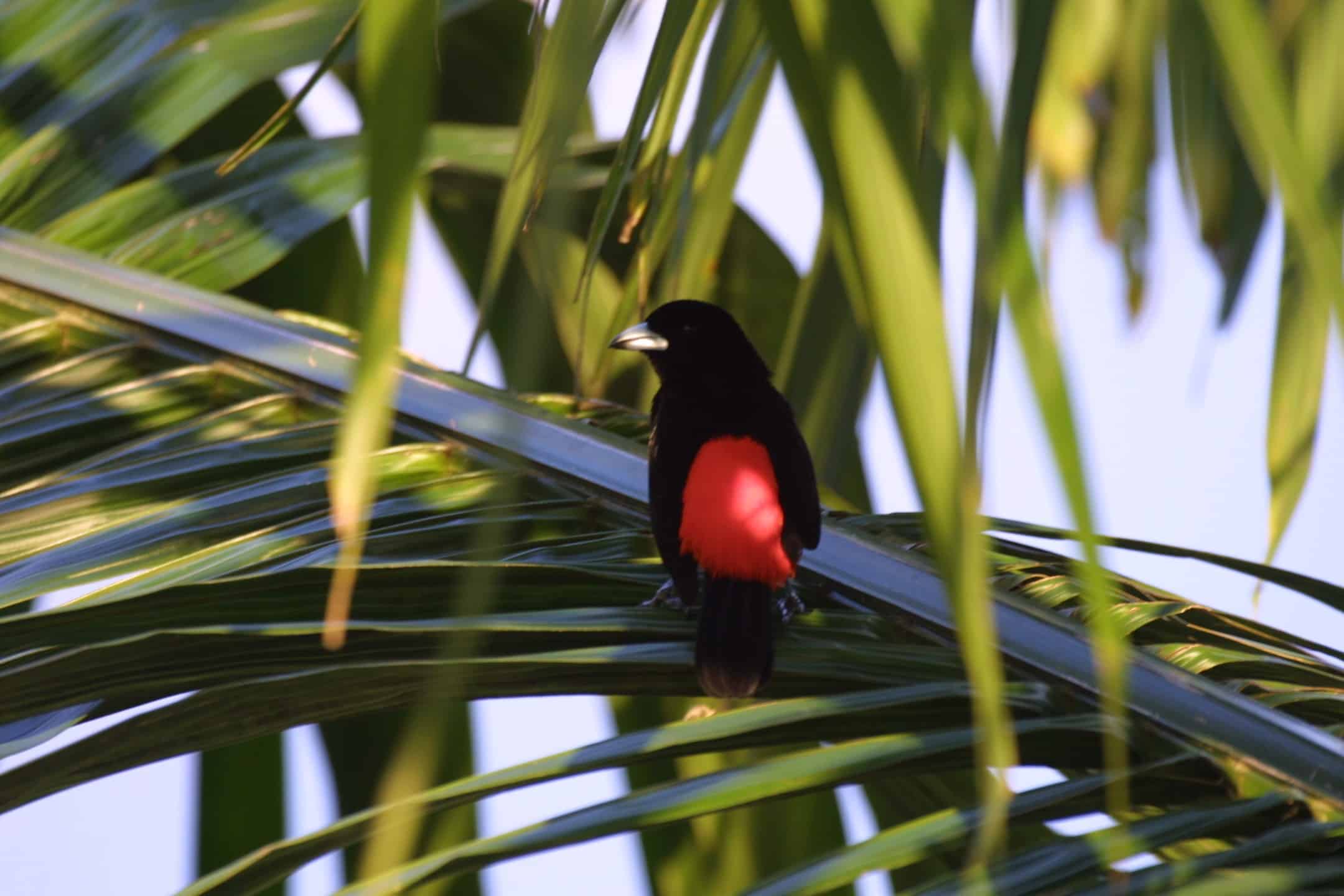
Costa Rica: A Birdwatcher’s Paradise
Costa Rica is truly a birdwatcher’s paradise. With more than 930 recorded species across rainforests, cloud forests, and coastal wetlands, it offers some of the richest birding experiences in the world. Imagine spotting a Resplendent Quetzal in Monteverde, a pair of Scarlet Macaws soaring over the Pacific, or vibrant tanagers flitting through the canopy. Our expert guides know where to look, helping you discover both iconic and rare species for a birding adventure that’s as educational as it is unforgettable.

Costa Rica is widely recognized as one of the top birding destinations on Earth. Often described as a living bridge between North and South America, this small Central American nation is home to an astonishing variety of bird species. To date, more than 930 species have been recorded in Costa Rica—more than the United States and Canada combined—packed into an area no bigger than West Virginia.
This incredible diversity is thanks to the country’s 12 distinct life zones, ranging from dry tropical forests to lush rainforests, high-altitude cloud forests, wetlands, mangroves, and coastal ecosystems. Add in Costa Rica’s mountainous terrain, volcanoes, and rolling hills, and you get a tapestry of microclimates that support birds of every shape, size, and color.
For birdwatchers, Costa Rica offers a chance to see everything from the brilliantly plumed Resplendent Quetzal to flocks of Scarlet Macaws, jewel-like hummingbirds, toucans, manakins, motmots, and countless migratory species that use the country as a stopover on their journeys. On a good day with an experienced guide, you might spot as many as 150 species in just 24 hours.
Why Birding in Costa Rica is Unique
Unlike many destinations where birding is limited to a few prime spots, Costa Rica offers birdwatching opportunities nearly everywhere you go. Whether you’re hiking in the remote Osa Peninsula, strolling through cloud forests, or even relaxing in a lodge garden, colorful birds are never far away.
Migratory routes also pass through Costa Rica, meaning you’ll see familiar species from North America alongside tropical endemics. Birding here is an experience of both recognition and discovery: spotting a Tennessee Warbler next to a fiery Fiery-billed Aracari feels almost magical.
Another advantage? Costa Rica’s accessibility and eco-tourism infrastructure. Well-maintained trails, expert naturalist guides, and eco-lodges designed with birdwatchers in mind make it easy to explore the country’s biodiversity while traveling responsibly.
Top Birding Destinations in Costa Rica
Monteverde Cloud Forest
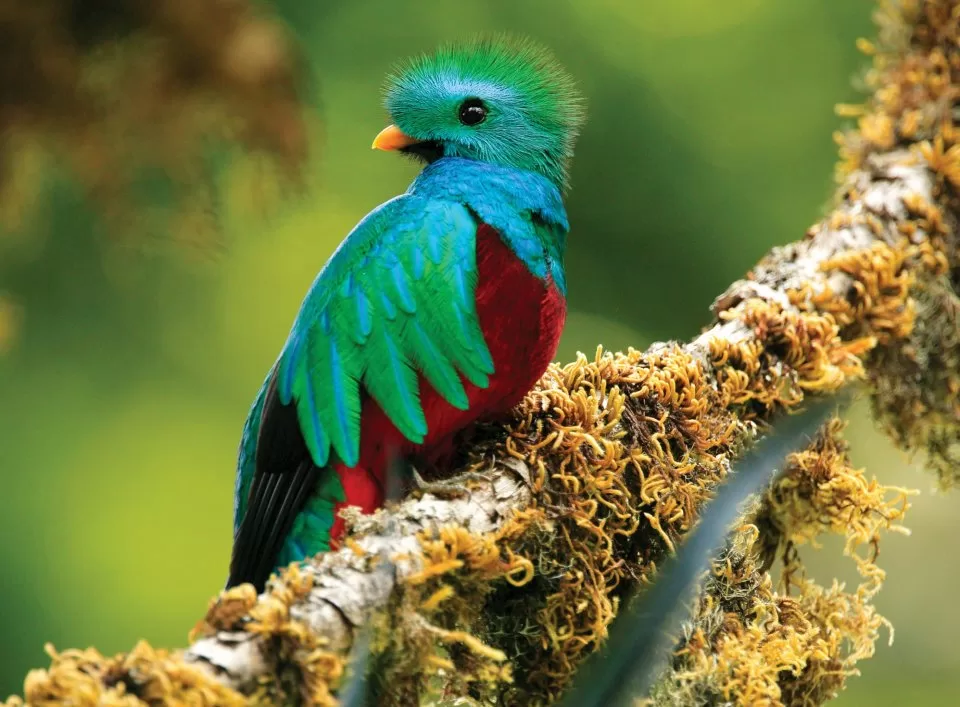
In 2007, Costa Ricans named the Monteverde Cloud Forest one of the 7 natural wonders of their country. Thanks to its unique location, the Reserve consists of different ecological zones, 90% of which are untouched forest. The cloud cover that hovers around the forest’s canopy creates a near-unique environment. Many of the plants and animals that are seen in the cloud forest cannot be found anywhere else in the world. Besides containing the most orchid species in a single place, Monteverde is estimated to be the home of upwards of 400 different bird species – and an early morning birding tour is the perfect opportunity to see how many you can spot!
- Must-See Bird: Resplendent Quetzal
Known as one of the most beautiful birds in the world, the Resplendent Quetzal has shimmering emerald feathers and a long, flowing tail. In Maya and Aztec cultures, the quetzal was considered sacred, symbolizing freedom and divinity. April, during the mating season, is the best time to spot them. - Other Highlights: Emerald toucanets, three-wattled bellbirds, and the tiny yet dazzling hummingbirds that hover around Monteverde’s feeders.
- Recommended Tours: Monteverde Reserve Hike, Curi-Cancha Reserve, Santa Elena Reserve.
Carara National Park
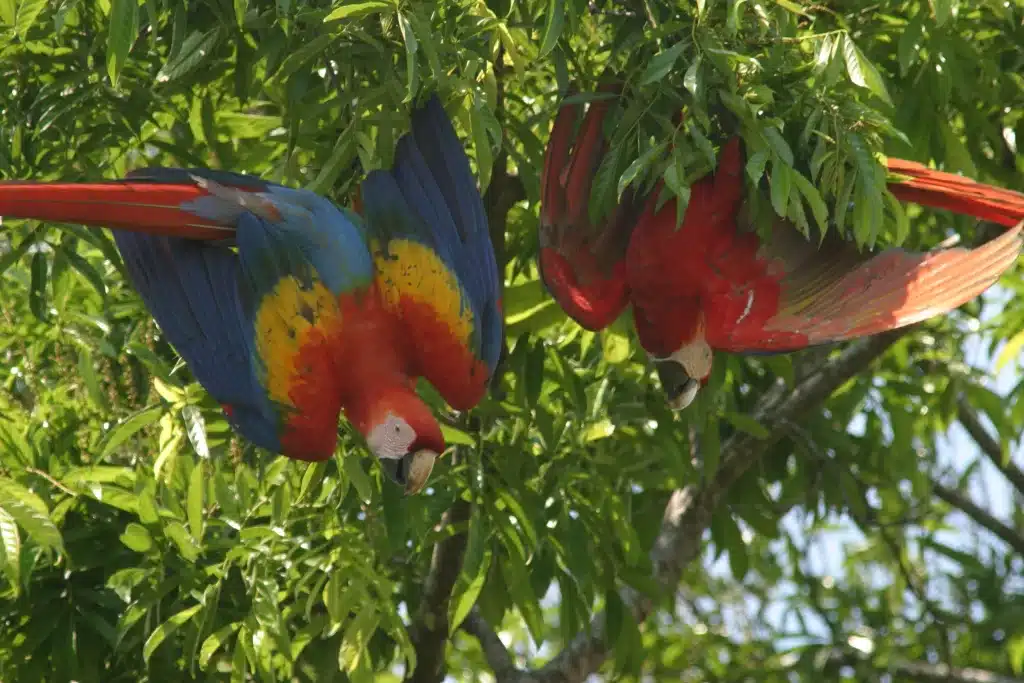
A variety of bird species can be found within Carara National Park on the Central Pacific Coast. This park has an array of bird and animal species, and is a favorite for bird-watchers. While the number seen might not compare to other locations, Carara’s location in a slightly drier area of the country means the rainforest is more open with fewer evergreens, making wildlife-spotting easier.
- Must-See Bird: Scarlet Macaw
These brilliantly colored parrots are among Costa Rica’s most iconic birds. Once widespread across Central America, their numbers dwindled due to habitat loss and the pet trade. Carara is now one of the best places to see wild macaws, often flying in pairs or flocks.
La Selva Biological Station
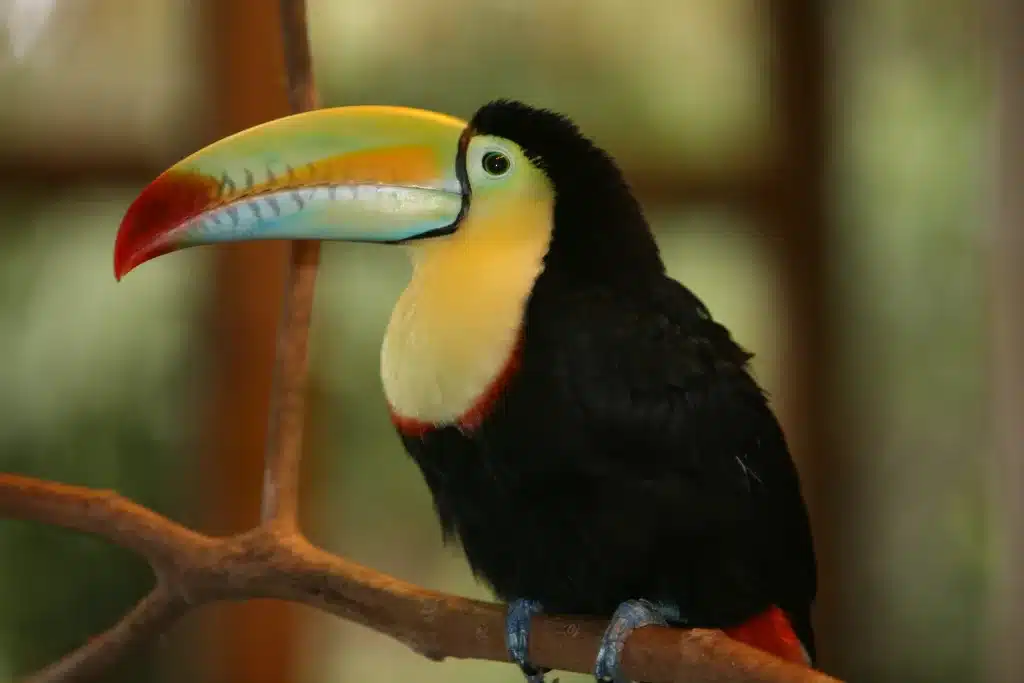
If you’re looking to check as many species as possible off your list, then La Selva Biological Station is the place to go. The actual La Selva protection area is over 1500 hectares, and the station is host to nearly 300 scientists and students annually. La Selva’s prime location, as well as the extensive laboratory facilities, make it internationally recognized as one of the best destinations in the world to study tropical rainforest ecology. The extraordinary number of birds reported in this one area rivals that of any other Central American site. More than half of the 450+ bird species are local, while the rest migrate through La Selva. Ease of access and an amazing visitor education center make La Selva an amazing combination of forest reserve, research station, and eco-tourism destination.
Our Costa Rica experts suggest staying at Selva Verde Lodge if birding or wildlife-spotting are on your to-do list. This amazing destination contains 500 acres of stunning cloud forest. Elevated wooden paths and walkways are neatly tucked into the rainforest, giving guests truly incomparable opportunities to get up close to nature! It definitely doesn’t hurt that Selva Verde Lodge is near a plethora of fun activities – from horseback riding to whitewater rafting, even the non-bird-lovers in your group will adore this destination.
- Species to Spot: Keel-billed toucans, great green macaws, snowy cotingas, and trogons.
- Why Visit: Easy access, professional guides, and a blend of research and eco-tourism.
- Stay Nearby: Selva Verde Lodge, with raised walkways through the forest and access to adventure activities.
Rancho Naturalista
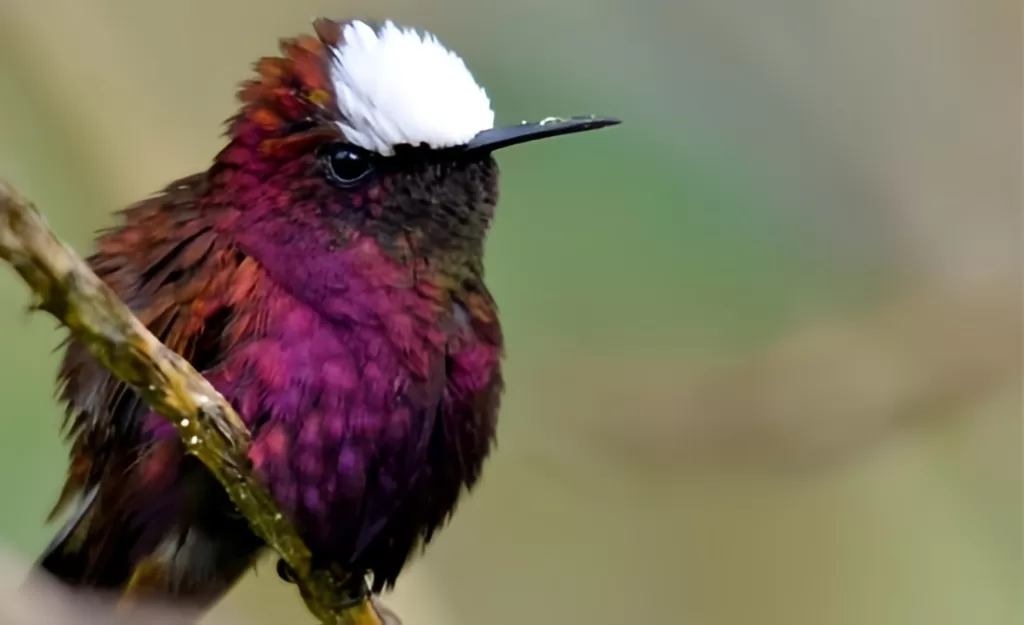
Renowned as one of the best birding lodges in Central America, Rancho Naturalista has an intimate, nature-focused atmosphere. Over 450 species can be seen on-site or nearby, including rarities and endemics.
- Special Highlight: The Snowcap Hummingbird
This tiny, iridescent hummingbird with a snowy white cap is a prize sighting for birders. - Experiences: Watch collared aracaris and chachalacas at the feeders, or hike to pools where hummingbirds bathe. Guided tours to Tapantí National Park and the Dota Highlands increase your chances of spotting the Resplendent Quetzal.
Santa Juana Lodge & Reserve
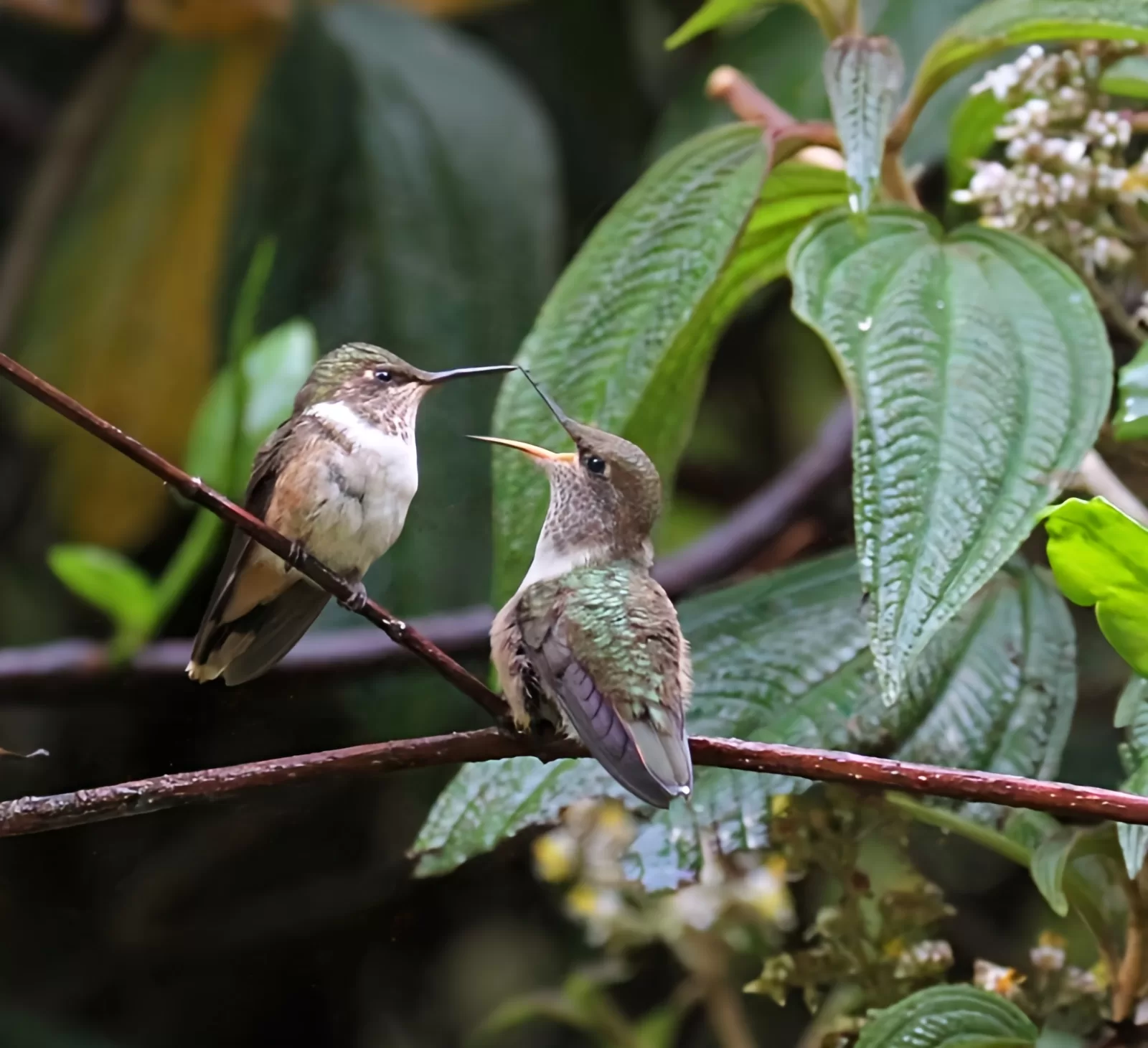
Where the Central and Southern Pacific regions of Costa Rica meet, birders will definitely find something to delight! Our travel Experts are adoring the new Santa Juana Lodge. Not only are bird-lovers luckily placed in a major migration route, but the nearby Talamanca Mountain range also contributes a variety of unique species to be spotted, from both the foothills and from the higher elevations. During peak migration, birders can log 250+ sightings in a day. Don’t be surprised if you’re from the USA or Canada and spot some home-like feathered friends – this migration corridor is one of their favorites, and they stand out among the brilliantly-colored tropical birds.
- Must-See Bird: Red-Capped Manakin
Nicknamed the “Michael Jackson bird,” this small, fruit-eating species is famous for its moonwalk-like mating dance. Seeing multiple males compete on a branch is an unforgettable experience.
Manuel Antonio National Park
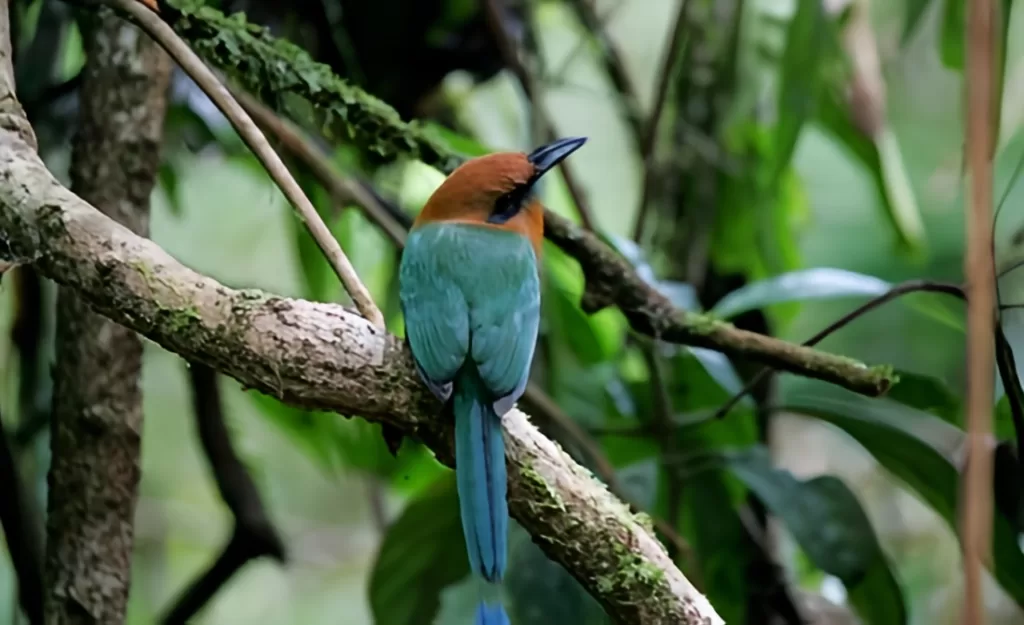
Another great birding destination is Manuel Antonio National Park. While small, it has unrivaled amounts of biodiversity and in 2011 was listed in Forbes as one of the most beautiful parks in the world. Thanks to its popularity, Manuel Antonio is easy to get to, and the surrounding area contains a wide variety of services. The park’s location means it contains mountains, rainforest, and beaches – everything you need for a great vacation! Scarlet Macaws and the Motmot pictured above can be found in Manuel Antonio National Park.
- Key Species: Motmots, scarlet macaws, and a variety of migratory warblers.
Peace Lodge at La Paz Waterfall Gardens
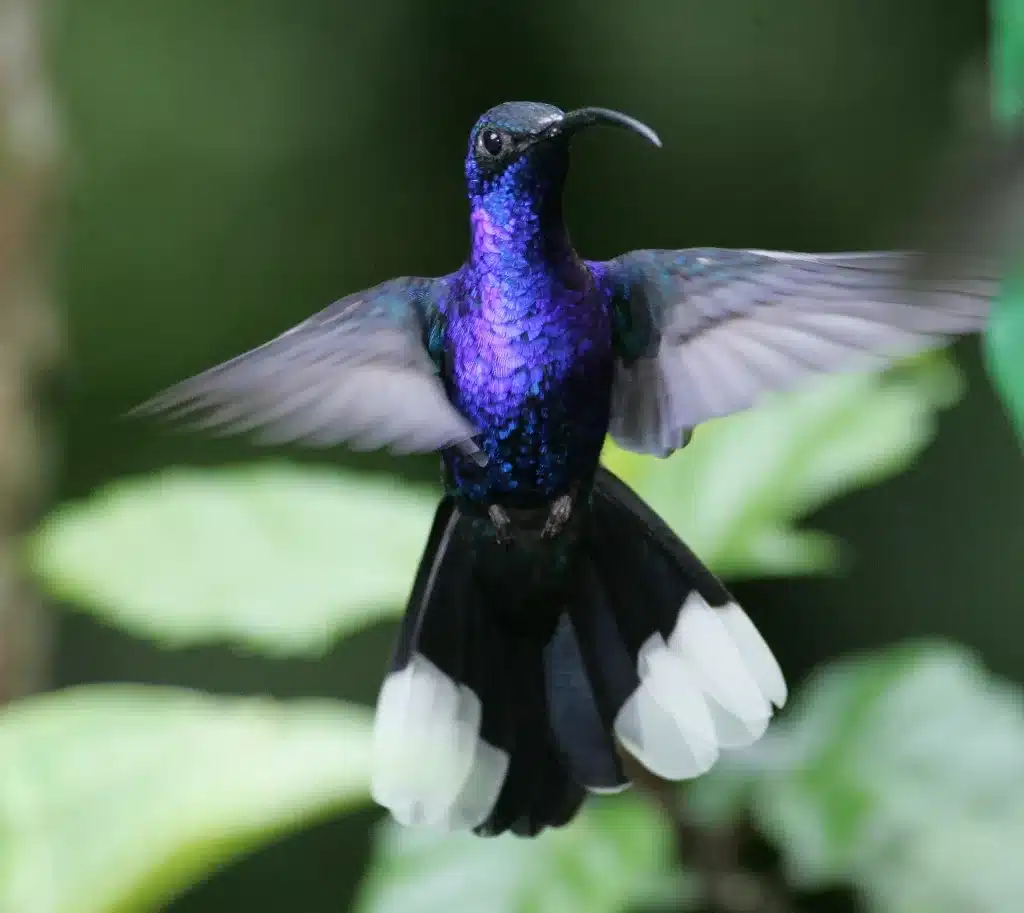
Peace Lodge is a must-see destination for any nature-minded traveler. The La Paz Waterfall Gardens at Peace Lodge is one of the most-visited ecological destinations in Costa Rica. There are few places in the country that manage to combine as many experiences as Peace Lodge has, including extensive hiking and amazing waterfalls.
For birders, this area has an added significance – besides the birds that fly in the aviary and visit the hummingbird garden, Peace Lodge is also in a migration corridor that is used by hundreds of species as they head north or south in search of fruit-bearing trees.
Must-See: the La Paz Aviary for Toucans & the Hummingbird Garden
Bird-watchers who visit the aviary at Peace Lodge will discover a variety of feathered friends. The refuge is primarily home to wild birds that were illegally caught by hunters and then confiscated by the government, as well as pets that have been donated. Visit the toucan exhibit for an up-close-and-personal look at these brightly-colored beauties. Peace Lodge’s toucans are favorites for photo-ops, and won’t hesitate to take food by hand!
For even more excitement, don’t miss out on the lodge’s Hummingbird Garden! 26 different species have been spotted at the Hummingbird Garden. Guests can stand just inches from a feeder without startling the birds, making this a favorite for photographers. Arrive before 9:00 am or stay past 4:00 pm for a chance to feed these flying jewels with the Peace Lodge’s specially-designed hand-feeder. For birders, the hummingbird garden is a highlight, with 26 species recorded.
- Must-See: Violet Sabrewing hummingbirds, emerald toucanets, and up-close encounters with toucans at the aviary.
Osa Peninsula & Corcovado National Park

The Osa Peninsula is home to some of the most remote, undisturbed rainforests in the world. You don’t necessarily need to be in Corcovado National Park to see birds down here! The place is crawling with wildlife. Over 350 bird species inhabit the peninsula. A lookout over the rainforest canopy from your eco lodge or on an early morning birding hike will reveal some of the unique, exotic birds that live here. The vibrant Scarlet Macaw can be frequently seen traveling in pairs. Swampy mangrove inlets are home to a variety of water birds.
- Highlights: Scarlet macaws, fiery-billed aracaris, and mangrove waterbirds. Eco-lodges like Lapa Rios offer guided “early bird tours” to maximize sightings.
Cano Negro National Wildlife Refuge
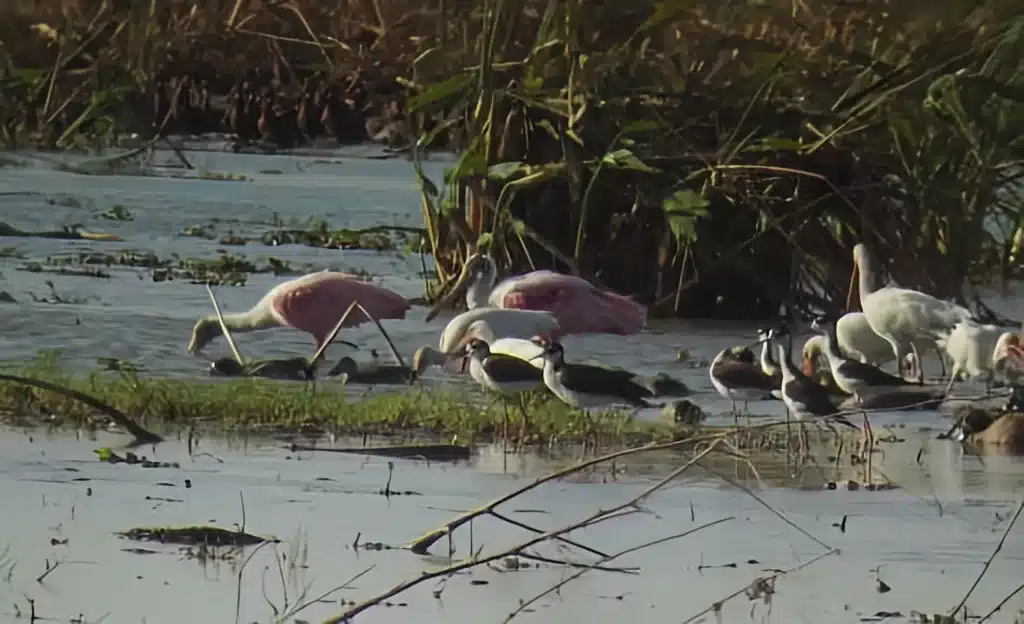
For aquatic bird species, explore Rio Frio and Cano Negro Lake within Cano Negro National Wildlife Refuge. You can book a day tour from the Arenal/La Fortuna area. The wildlife refuge is home to a variety of species, including roseate spoonbills, storks, egrets, and herons. Wildlife is most abundant during the green season when the regional waters swell.
- Best Season: The rainy “green” season, when water levels are high and bird activity peaks.
Palo Verde National Park
Take a boat tour through the Palo Verde National Park wetlands fed by the Tempisque River. In addition to the monkeys, crocodiles, and other marshland wildlife that can be found there, Palo Verde is a fantastic birding destination. The dry, sparse landscape of Palo Verde makes it easier to spot wildlife than in the rich vegetated regions of Southern Costa Rica.
- Birds to Watch For: Jabiru storks (the tallest flying bird in the Americas), tiger herons, and white ibises.
Travel Tips for Birding in Costa Rica
- Best Time to Visit: Birding is excellent year-round, but December to April (dry season) offers easier travel. For Resplendent Quetzals, April is peak mating season. Migration periods (spring and fall) bring extra diversity.
- What to Bring: Binoculars (8×42 or 10×42 are ideal), a good field guide or birding app, and a camera with a zoom lens. Light, moisture-wicking clothing and sturdy shoes are recommended.
- Hire a Guide: Local naturalist guides are invaluable. They recognize bird calls, spot hidden species, and enrich the experience with ecological knowledge.
Costa Rica Birding FAQs:
How many bird species are there in Costa Rica?
Costa Rica is home to over 930 recorded bird species – more than Canada and the United States combined! This impressive diversity is due to the country’s varied ecosystems, including rainforests, cloud forests, wetlands, mangroves, and coastal habitats. Whether you’re looking for iconic species like the Resplendent Quetzal, Scarlet Macaw, or Keel-billed Toucan, or rare migratory birds passing through, Costa Rica is a paradise for birdwatchers.
Where can I find hummingbirds in Costa Rica?
You can see hummingbirds throughout Costa Rica, but some of the best places to spot them are in cloud forests, rainforests, and gardens at higher elevations. Top locations include:
- Monteverde Cloud Forest Reserve – Known for its hummingbird garden where species like the Violet-crowned Woodnymph and Green-crowned Brilliant gather around feeders.
- La Paz Waterfall Gardens – This popular spot near Poás Volcano has hummingbird feeders that attract a variety of species.
- Savegre Valley – Particularly great for spotting the Resplendent Quetzal, but also home to several hummingbird species like the Fiery-throated Hummingbird.
- Arenal Observatory Lodge & Gardens – Gardens filled with flowers attract multiple hummingbird species, especially around the feeders.
- San Gerardo de Dota – High-altitude cloud forests are perfect for seeing species like the Volcano Hummingbird.
Hummingbirds are active year-round, but mornings tend to be the best time for sightings.
Do I need a birding guide while in Costa Rica?
You are certain to see more birds with a professional naturalist guide in Costa Rica. These guides know bird calls, can often mimic them, and can detect unique birding behaviors that the untrained eye or ear would miss. Furthermore, they’ll often bring professional binoculars along so you can get a closer look at the birds you come across than you otherwise would have.
















